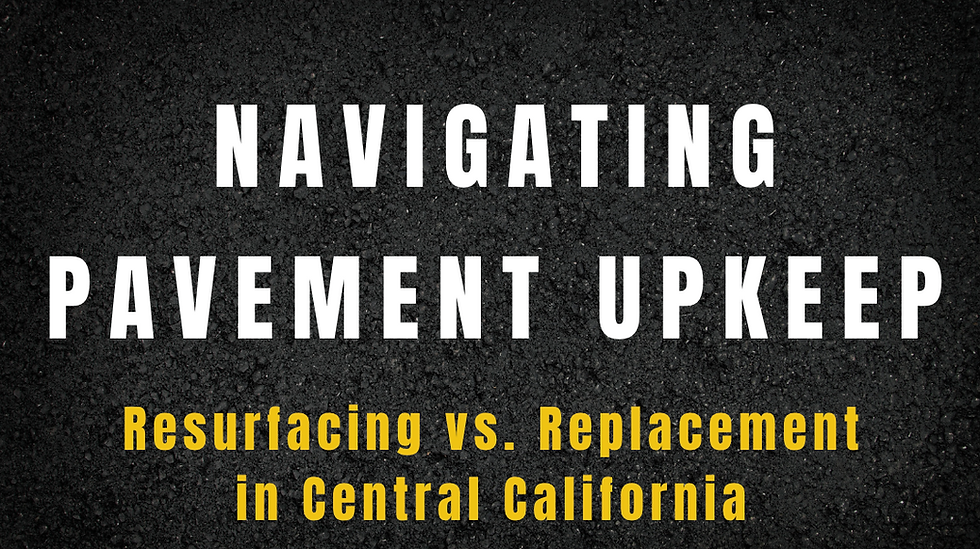Laying New Pavement: Ensuring a Solid Foundation
- Central Coast Paving
- Sep 6, 2023
- 2 min read

Paving a path or driveway might seem as straightforward as laying down some asphalt and compacting it. However, like building a house, a well-paved surface begins with a solid foundation. Before laying asphalt, there's a crucial preparatory stage that's pivotal for the longevity and durability of the pavement. Dive into this comprehensive guide to understand the significance of preparation and the steps involved.
Laying the Groundwork For a Solid Foundation
Just as an artist primes a canvas before painting, the ground needs to be prepped before laying asphalt. Site preparation is a meticulous process that sets the tone for the final product. Here's a step-by-step breakdown:
Complete Replacement
Removal: Start by removing any existing pavement. This ensures a fresh start, free of deteriorated materials or contaminants that might affect the new layer.
Grading: This involves leveling the site to facilitate proper drainage. A well-graded surface ensures that water doesn't accumulate and weaken the asphalt.
Base Material: Once graded, lay down and compact a suitable base material. This base layer is crucial as it supports the asphalt and handles the brunt of the traffic load.
Overlay Installation
Milling: The existing surface is milled down to create a smooth and clean layer.
Cleaning and Bonding: Once milled, the surface is swept clean and a bonding agent is applied. This ensures that the new asphalt adheres effectively to the existing surface.
Laying the Overlay: A fresh layer of asphalt is then applied over the prepped surface.
Whichever method you choose, meticulous site preparation is the backbone of a lasting asphalt structure.
Should you Remove Concrete Before Paving?
A question many property owners grapple with is whether to remove existing concrete before paving. The answer isn't always black and white. If the concrete is in good condition with minimal cracks and no signs of significant damage, asphalt can sometimes be laid over it.
Depending on the nature and demands of your project, it might be preferable to remove the concrete and start afresh.
An often-overlooked factor, drainage is vital. Before considering an overlay on existing concrete, proper drainage should be assessed and verified. Standing water can degrade asphalt over time, so ensuring efficient drainage is paramount.
Leave It to the Pros
While DIY projects can be gratifying, laying asphalt isn't one to be taken lightly. The process demands specialized equipment, nuanced knowledge, and an experienced hand. Central Coast Paving, Inc. brings all these to the table, and more:
Expertise: Years of experience mean we've mastered the craft of asphalt paving, understanding the unique demands of different projects.
Equipment: Our arsenal includes state-of-the-art machinery that guarantees precision and longevity.
Peace of Mind: By entrusting your project to professionals, you ensure the end result is both durable and aesthetically pleasing.
Conclusion
Before laying asphalt, attention to detail and proper preparation are key. Whether you're resurfacing an old driveway or paving a new one, ensure you're building on a solid foundation. And when in doubt, remember professionals at Central Coast Paving, Inc. are just a call away. Call us at (805) 665-3292 to get started today.




Comments